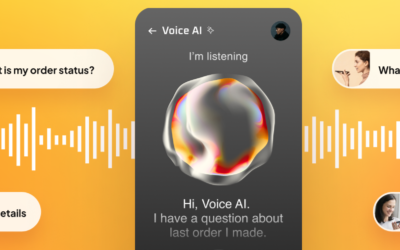When your customers run into a problem with your product, they contact your support team. But not just a regular one. For “IT” related issues, they get tech support. Whether the problem is a “user” error, a bug, or a technical issue, it doesn’t matter to them. They just want it solved so they can continue with their workload. If they can’t log in to your product? They contact technical support. A feature or module isn’t working as it normally does? They contact tech support.
Therefore, any questions relating to the product (how to install it, how to configure it, etc.) all need to be answered by technical expertise in order for your customers to get the best value out of your product. If you don’t have a tech support team in place to answer these questions, then customers will eventually stop using your product. And this leads to higher churn rates.
Put simply, if you run a product-based business, then technical IT support is crucial to your overall success. Yet, there’s a challenge with tech support. It’s expensive! In fact, it’s 100x more expensive than self-service channels. Each time you fail to solve a tech support question, you’re potentially throwing money away. To help you and your team, we’ve created the ultimate guide to tech support.
In this article, we’ll outline what tech support is, why you should care about it, and how it works — as well as hints and tips to help your business improve on the quality of tech support.
Let’s get straight into it!
What is Technical Support?
Technical or ‘tech’ support is a form of customer communication that product-centric companies use to help their users get the most out of their products. Typically, this is done via knowledge bases, live chat, email, or phone — and aims to solve technical problems such as installation issues, login errors, and other technical difficulties that can have a negative impact on the user experience.
But, isn’t tech support just another word for customer support? Well, not exactly. We will delve into all of the differences in the next section.
Tech Support vs. Customer Support
When people hear the word tech support, it’s easy to imagine people in call centres, dealing with unhappy customers who want to vent their frustrations about overpayment and delivery issues. These types of issues will be handled by your customer support team, and not your tech support team. Where tech support differs is in the type of issues that are handled.
Tech support teams are responsible for handling installation errors, user issues, and any other technical problem that prevents the customer from using your product. In essence, tech support focuses on helping customers to use a product more effectively.
A study from The CMO Council found that providing better tech assistance and advice to customers is the number one way companies can improve the product ownership experience for users.
By focusing on providing better technical advice and support to your customers, you will help customers use your product. Another notable difference between tech support and customer support is the number of support levels. Customer support has fewer levels. The first line of support is via a customer service agent; the second line of support is via the customer support manager. With tech support, there are 5 levels of support.
The 5 Levels of Tech Support
Your technical support team has a difficult job Depending on the needs of your users, it could be handled using email, live chat support, knowledge bases, or even over the phone. As well as being available on a variety of platforms, a well-structured tech support system will also be split into 5 distinct levels. These 5 levels include pre-support, self-service, first-line support, second-line support, and in urgent cases, the third line of support.
1. Pre-support — at this stage, the customer tries to do a generic Google search or use some other search engine to find the information they need.
2. Self-service — before contacting technical customer support, the customer will browse through the FAQs and documentation you have on your website.
3. The first line of support — when the customer could not find the answers they need independently, they will contact your tech support team. Tech support personnel at this level have a basic to a general understanding of the product or service, but may not always contain the competency required for solving complex issues.
4. The second line of support — complex issues that cannot be solved by the first line of tech customer support be escalated to the second level. Here the agents have a deeper knowledge of the product and ways to troubleshoot the issues.
5. The third line of support — the vast majority of tech customer support issues end here. Third-line support deals with outlier cases that levels pre-support to the second line could not handle, which means that third-line tech support is likely to be managed by a designated super user, or even someone from your R&D department.
7 Tips for Improving Your Technical Support Service
So far, we’ve established what tech support is and why it’s important to get it right. But, what if you’re already running a tech support system, how can you make it better? We’ve put together 7 tips for better tech support that’ll help you keep your users happy so that they remain loyal customers for years to come.
Let’s jump right in!
1. Outsource intelligently
Tech support gives you a huge opportunity to influence the overall user experience of your product. But, you need to make sure that your tech support team knows the product inside out. This is why you should think carefully before you outsource the handling of your tech support.
2. Your tech support is just as important as sales
Your business does not operate in silos. Instead, you look at the effect each part of the business has on the others. Your tech customer service should be the same way. It’s not just about handling incoming customer requests. You can also use tech support to upsell and cross-sell products and features to your customers.
3. Implement the levels of support described earlier
As your business grows, you need to make sure the needs of your customers are met quickly and efficiently. It’s clearly not an affordable or sensible idea to have your CTO answering all the support tickets in your queue, so consider implementing the 5 levels of tech support to filter out the ‘low hanging fruit’ and easy to deal with queries that can be handled by a more junior member of the team.
4. Take charge of external discussions
If your user runs into a problem, their first point of contact might be on a forum or on social media. Therefore, you will need to monitor user conversations outside of your own platform. If you can take the time to monitor and contribute to the conversations happening online about your product, it can go a long way. Not only will it solve the customer’s immediate problem, but it’ll reassure others that you care, and convince them to become customers too.
5. Let your customers contact you with ease
Have you hidden your tech support link in the footer of your website? No one wants to spend time browsing your website for a link to tech support. To prevent this, be where your customers are and make it easy for them to contact you.
6. Learn from your customers
Your customers can give you valuable insights into what’s working in your product and what isn’t. By listening to the different tech support queries that come in, you can discover how you can improve your product, the quality of tech support you provide, and in many cases, form a complete feedback loop between user and product. This kind of voice of customer (VOC) data can be powerful.
7. Invest in the right tools
The best tools will be able to handle incoming queries, support tickets, live chat, escalation, and knowledge bases — all while keeping the rest of your team up to speed with tech issues.

Trust Pexly to Provide Your Customers With Top-Quality Tech Support
If you are looking to expand your current tech support team or set up an entirely new offshore dedicated support team, Pexly can help you with all stages of the project. Not only can we source and recruit the needed candidates who will meet your requirements, but we will also provide them with the right training to make sure they hit the ground running.
Contact us to learn more about how we can help you!



